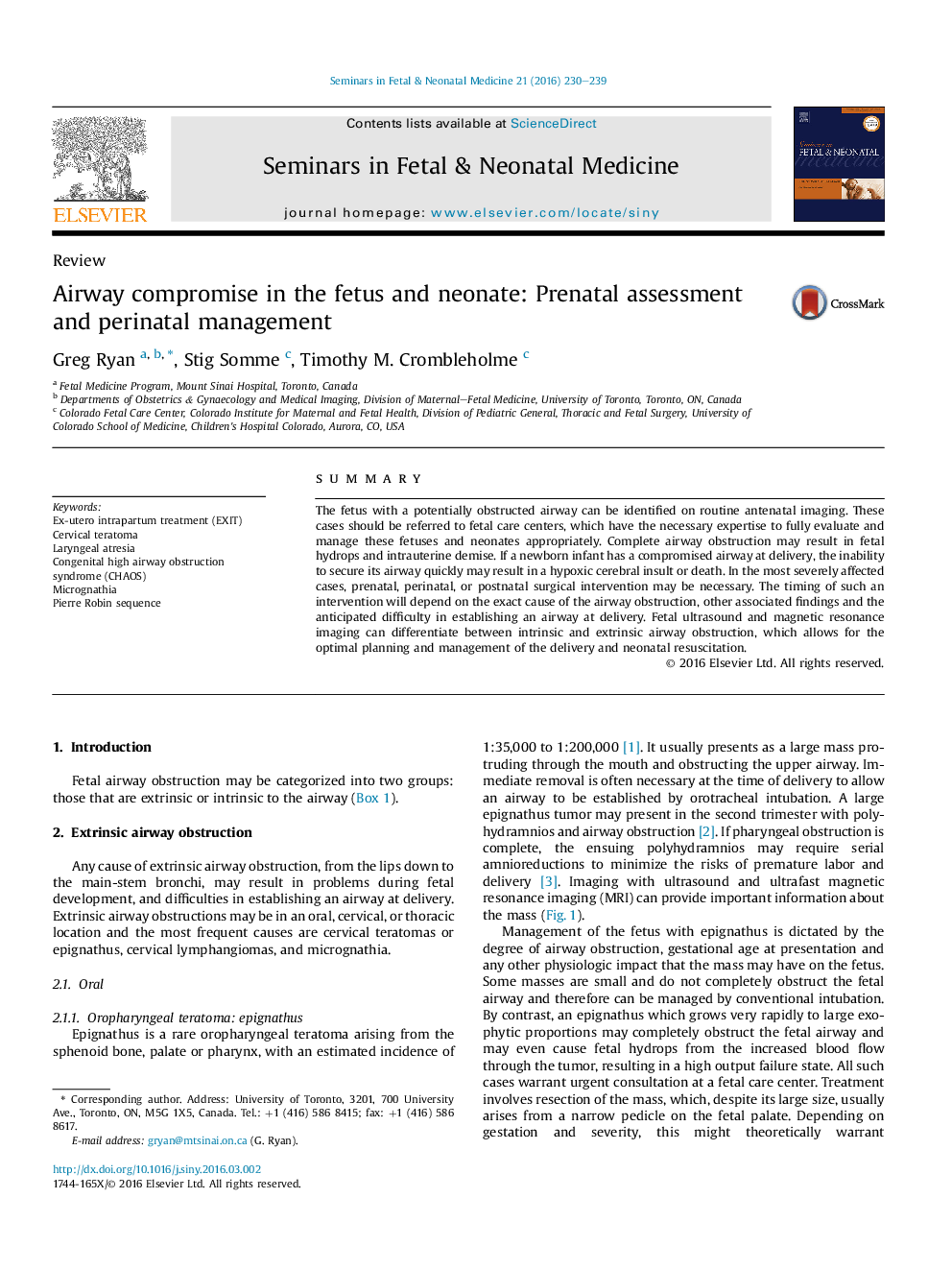| Article ID | Journal | Published Year | Pages | File Type |
|---|---|---|---|---|
| 3973936 | Seminars in Fetal and Neonatal Medicine | 2016 | 10 Pages |
SummaryThe fetus with a potentially obstructed airway can be identified on routine antenatal imaging. These cases should be referred to fetal care centers, which have the necessary expertise to fully evaluate and manage these fetuses and neonates appropriately. Complete airway obstruction may result in fetal hydrops and intrauterine demise. If a newborn infant has a compromised airway at delivery, the inability to secure its airway quickly may result in a hypoxic cerebral insult or death. In the most severely affected cases, prenatal, perinatal, or postnatal surgical intervention may be necessary. The timing of such an intervention will depend on the exact cause of the airway obstruction, other associated findings and the anticipated difficulty in establishing an airway at delivery. Fetal ultrasound and magnetic resonance imaging can differentiate between intrinsic and extrinsic airway obstruction, which allows for the optimal planning and management of the delivery and neonatal resuscitation.
